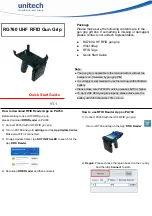
580000 | REV. A | 04.2017
Bosch Automotive Service Solutions Inc.
OBD 2220
Info Scan
| User guide | 37 | en
An input signal to the PCM indicating that the brake
pedal is being pressed. This signal is typically used to
disengage cruise control systems and torque converter
clutch (TCC) solenoids. See also TCC.
CAM:
Camshaft position sensor. Sends a frequency signal to
the PCM to synchronize fuel injector and spark plug
firing.
Catalytic converter:
Designed to reduce exhaust emissions.
CAN:
Controller area network
CARB:
California air resources board. Governing body for emis-
sions control in California.
CKP REF:
Crankshaft position reference.
CKP:
Crankshaft position. See CPS.
CKT:
Circuit
Closed loop (CL):
A feedback system that uses the O2 Sensor(s) to moni-
tor the results of combustion. Based on the signal(s)
from the O2 sensor(s), the PCM modifies the air/fuel
mixture to maintain optimum performance with lowest
emissions. In closed loop mode, the PCM can fine tune
control of a system to achieve an exact result.
CMP:
Camshaft position sensor
CO:
Carbon monoxide; odorless gas produced by incomplete
combustion.
Code scanner:
A device that interfaces with and communicates informa-
tion via a data link.
Continuous memory codes:
See pending codes.
CPS:
Crankshaft position sensor. Sends a frequency signal to
the PCM. It is used to reference fuel injector operation
and synchronize spark plug firing on distributorless
ignition systems (DIS).
CTS:
Coolant temperature sensor. A resistance sensor that
sends a voltage signal to the PCM indicating the tem-
perature of the coolant. This signal tells the PCM
whether the engine is cold or warm.
CVRTD:
Continuous variable real time damping
D/R:
Drive/reverse
Data Link Connector (DLC):
Connector providing access and/or control of the vehicle
information, operating conditions, and diagnostic infor-
mation. Vehicles with OBD II use a 16-pin connector
located in the passenger compartment.
Data stream:
The actual data communications sent from the vehicle’s
PCM to the data connector.
DEPS:
Digital engine position sensor.
Detonation:
See knock.
DI/DIS:
Direct Ignition/Distributorless Ignition System. A system
that produces the ignition spark without the use of a
distributor.
DPFE:
Differential pressure feedback-exhaust gas recirculation
sensor
DTC:
Diagnostic trouble code. An alphanumeric identifier for a
fault condition identified by the on board diagnostic
system.
Duty Cycle:
A term applied to signals that switch between on and
off. Duty cycle is the percentage of time the signal is on.
For example, if the signal is on only one fourth of the
time, then the duty cycle is 25%. The PCM uses duty
cycle type signals to maintain precise control of an
actuator.
EBCM:
Electronic brake control module
EBTCM:
Electronic brake/traction control module
ECM:
Engine control module or electronic control module
ECT:
Engine coolant temperature sensor. See CTS.
EEPROM:
Electrically erasable programmable read only memory
EFE:
Early fuel evaporation
EFI:
Electronic fuel injection. Any system where a computer
controls fuel delivery to the engine by using fuel injec-
tors.
EGR:
Exhaust gas recirculation. The PCM uses the EGR system
to recirculate exhaust gases back into the intake mani-
fold to reduce emissions. EGR is used only during warm
engine cruise conditions.
EOP:
Engine oil pressure (switch)
EOT:
Engine oil temperature (sensor)






































